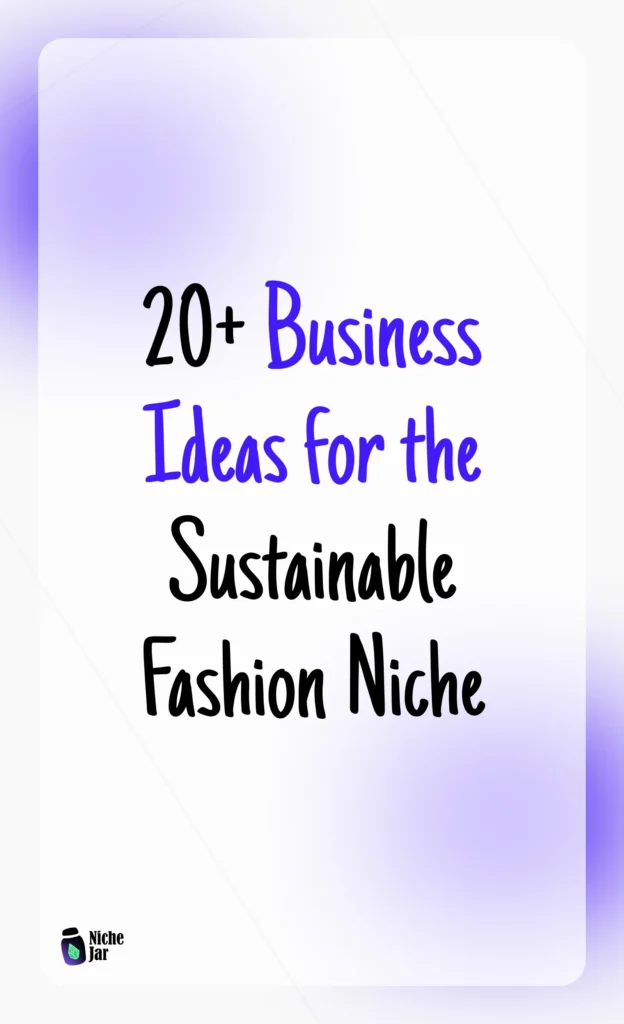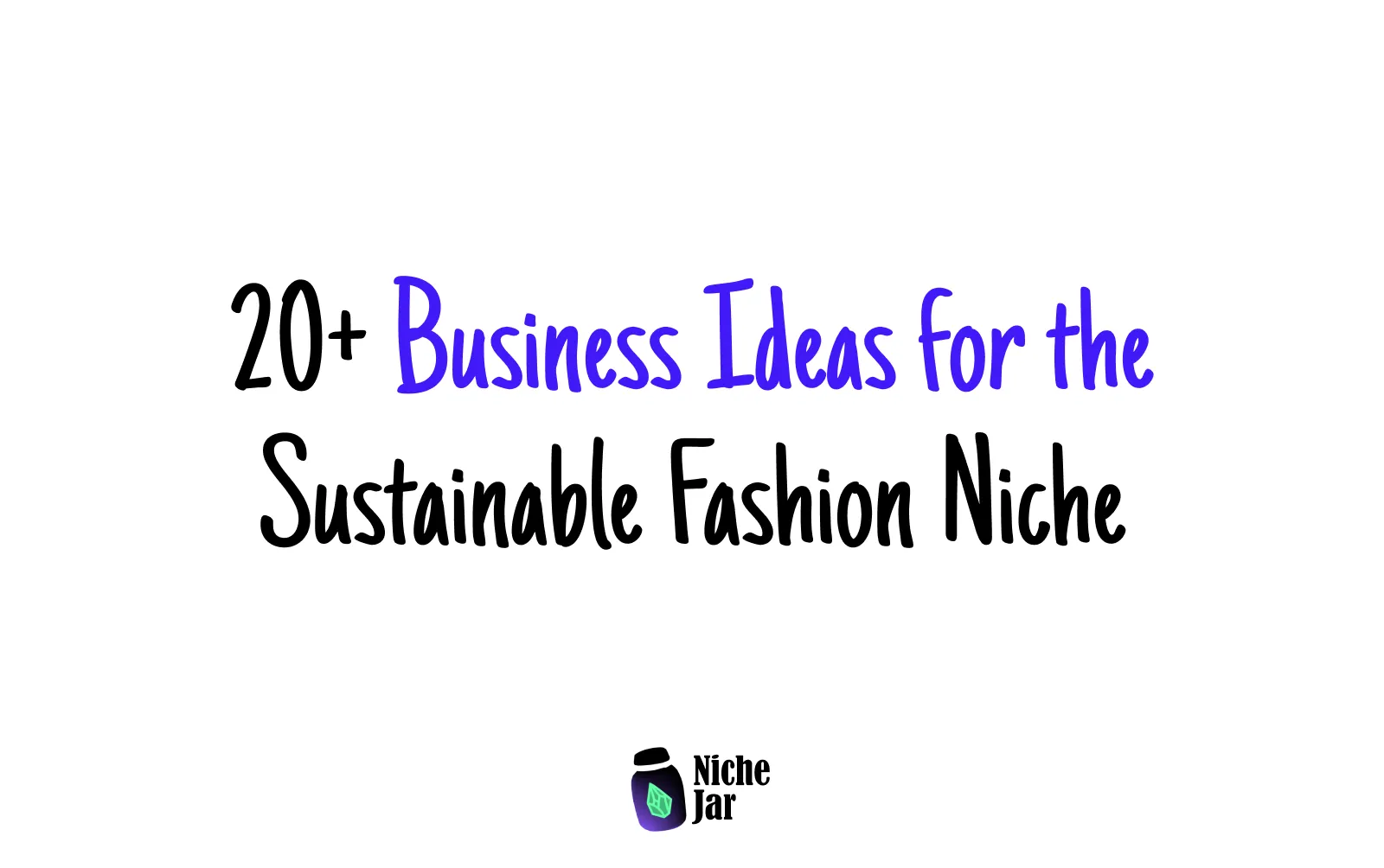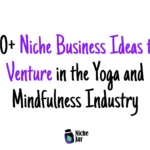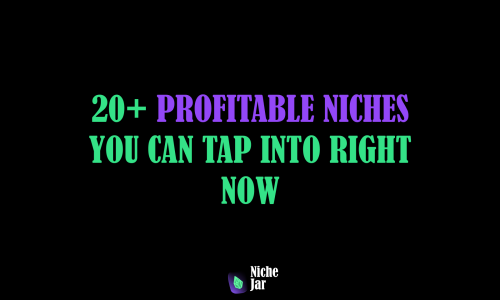- Senia
- 0 Comments
- 449 Views
Have you ever wondered how fashion could be both profitable and planet-friendly? Exploring business ideas in the sustainable fashion niche opens up opportunities to earn an income while making a positive impact. From what I’ve seen, more people are searching for clothes that align with their values, and this creates room for small entrepreneurs to step in. The question is: where do you start?
The fashion industry is one of the largest in the world, but it’s also among the most wasteful. From fast fashion trends that change weekly to the mountains of discarded clothing, it’s clear that something needs to shift. This is where sustainable fashion business ideas come in. For everyday people looking to start a business, this niche offers meaningful opportunities—not just to make money, but also to contribute to a more thoughtful way of living.
From what I’ve seen, people are no longer satisfied with cheap, throwaway items. They’re searching for clothes and accessories that last longer, are made ethically, and don’t harm the planet. That’s why the sustainable fashion niche has been growing steadily. If you’ve ever dreamed of starting a clothing line, opening a store, or even building a digital platform, now might be the time to explore how sustainability can set your business apart.
In this guide, we’ll walk through 20+ profitable business ideas for sustainable fashion, with practical steps, startup costs, money-making strategies, and real-world examples. I’ll keep it humble—there’s no one-size-fits-all approach here, but my hope is that you’ll find one or two ideas that spark something for you.
Each idea includes a closer look at why it’s worth considering, how to start, potential challenges, and ways to earn income.
Let’s dive in.
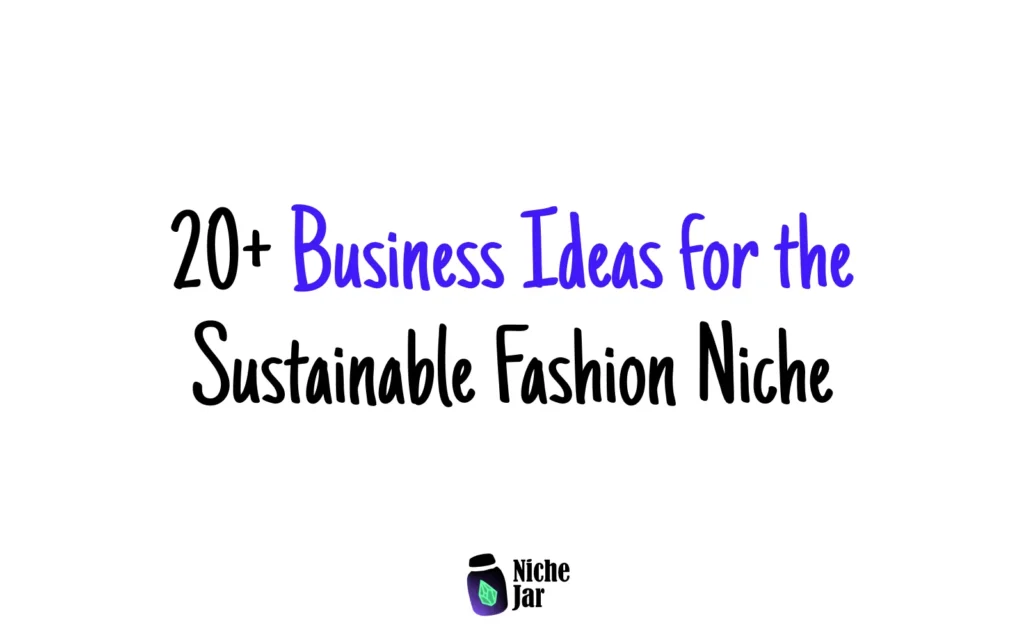
1. Upcycled Clothing Business
What it is: Turning old or discarded clothes into new, stylish pieces.
Why it works: Consumers love the uniqueness of upcycled fashion, and it reduces waste.
Steps to start:
- Collect clothes from thrift shops or donations.
- Learn basic sewing, dyeing, or patchwork techniques.
- Build a small online store (Etsy, Shopify).
- Market on Instagram or TikTok with before-and-after visuals.
Challenges: Scaling production can be tough. A humble solution is to start with small collections and collaborate with local tailors.
Startup cost: $500–$2,000 for sewing equipment, materials, and marketing.
Monetization: Product sales, custom requests, workshops on upcycling.
Example: Brands like R Collective show that upcycled fashion can find global audiences.

2. Secondhand Fashion Store
What it is: Selling pre-loved fashion online or in a physical shop.
Why it works: Resale fashion is expected to double in the next decade.
Steps to start:
- Curate quality secondhand items.
- List on Depop, Vinted, or Poshmark.
- Focus on niches (e.g., luxury handbags, streetwear).
- Offer styling services for an added fee.
Challenges: Sorting and quality control take time. Setting clear return policies can help.
Startup cost: $1,000–$5,000 depending on stock.
Monetization: Direct sales, consignment, styling packages.
Example: ThredUp has scaled secondhand fashion into a multimillion-dollar marketplace.
3. Eco-Friendly Accessories Brand
What it is: Creating bags, belts, hats, or jewelry made from recycled or natural materials.
Why it works: Accessories have lower production costs than full clothing lines, and people love sustainable statement pieces.
Steps to start:
- Choose a niche (e.g., cork wallets, bamboo sunglasses, recycled metal jewelry).
- Partner with local artisans or small-scale producers.
- Build a brand story around eco-materials.
- Sell online via Etsy, Shopify, or eco-focused marketplaces.
Challenges: Sourcing authentic eco-friendly materials can be tricky. Research trusted suppliers and start small.
Startup cost: $1,000–$4,000.
Monetization: Direct product sales, wholesale to boutiques, pop-up events.
Example: Brands like Elvis & Kresse repurpose old fire hoses into luxury bags.
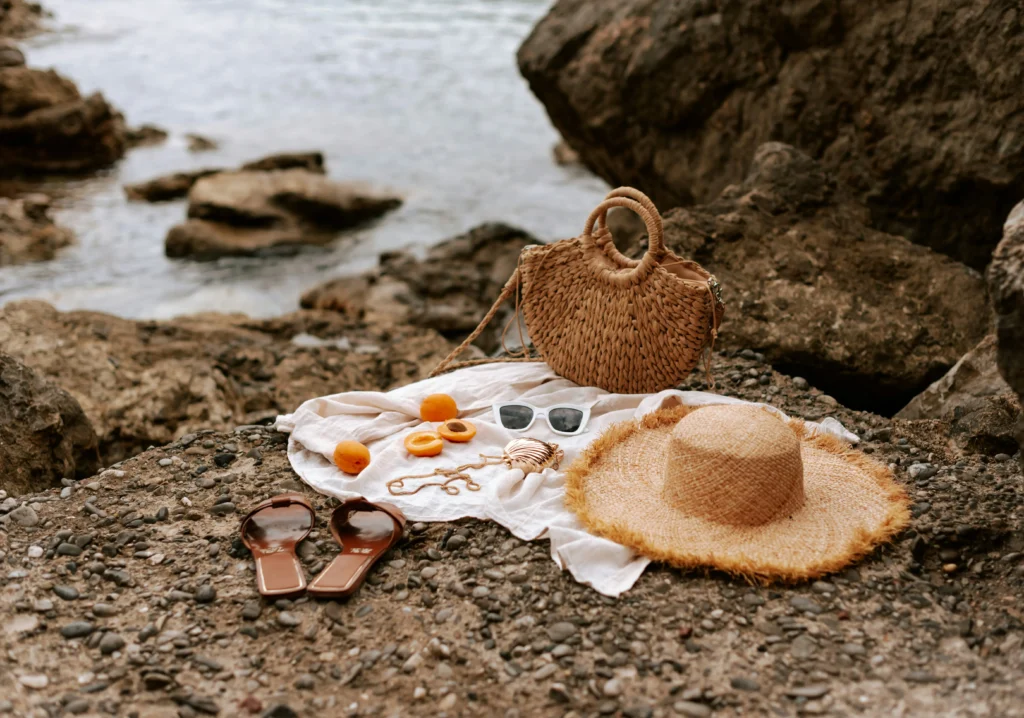
4. Sustainable Shoe Line
What it is: Designing shoes using recycled rubber, organic cotton, or plant-based leathers.
Why it works: Footwear is a booming industry, and sustainable options stand out in a crowded market.
Steps to start:
- Research eco-materials suitable for shoes.
- Start with one simple product (like sneakers).
- Use crowdfunding to finance production.
- Market as durable and stylish alternatives to fast-fashion shoes.
Challenges: Manufacturing requires upfront investment. A solution is to launch pre-orders before mass production.
Startup cost: $10,000–$25,000.
Monetization: Direct sales, crowdfunding, brand collaborations.
Example: Veja is known for fair trade sneakers made with organic materials.
5. Organic Cotton Clothing Line
What it is: A fashion line using certified organic cotton instead of conventional cotton.
Why it works: Organic cotton uses less water and no harmful pesticides, appealing to eco-conscious buyers.
Steps to start:
- Source certified organic cotton suppliers.
- Design simple staples (t-shirts, loungewear, basics).
- Highlight certifications on your branding.
- Sell online with eco-focused marketing.
Challenges: Higher fabric costs. Overcome this by starting with limited styles.
Startup cost: $5,000–$15,000.
Monetization: Product sales, wholesale, subscription bundles.
Example: Pact Apparel is known for affordable organic basics.
6. Plant-Based Leather Goods
What it is: Fashion products made from vegan alternatives like mushroom leather, pineapple leaves, or cactus leather.
Why it works: Vegan leather is trending, and customers are willing to pay more for cruelty-free products.
Steps to start:
- Research suppliers offering plant-based leather.
- Create a small range (wallets, belts, or handbags).
- Market with transparency about materials.
- Sell through eco-conscious retailers.
Challenges: Materials are often expensive. Start with premium pricing and niche audiences.
Startup cost: $3,000–$10,000.
Monetization: Direct product sales, premium positioning.
Example: Desserto makes cactus leather bags that compete with traditional leather.
7. Zero-Waste Fashion Consultancy
What it is: Helping brands reduce textile waste in design and production.
Why it works: Many companies want to go sustainable but don’t know where to start.
Steps to start:
- Build expertise through research or certifications.
- Offer audits, waste-reduction strategies, or training.
- Market to small brands seeking eco-credentials.
Challenges: Building authority. Start by sharing free content online to establish trust.
Startup cost: $1,000–$3,000 (mainly marketing/website).
Monetization: Consulting fees, workshops, B2B partnerships.
Example: Designers like Timo Rissanen pioneer zero-waste patterns in fashion.
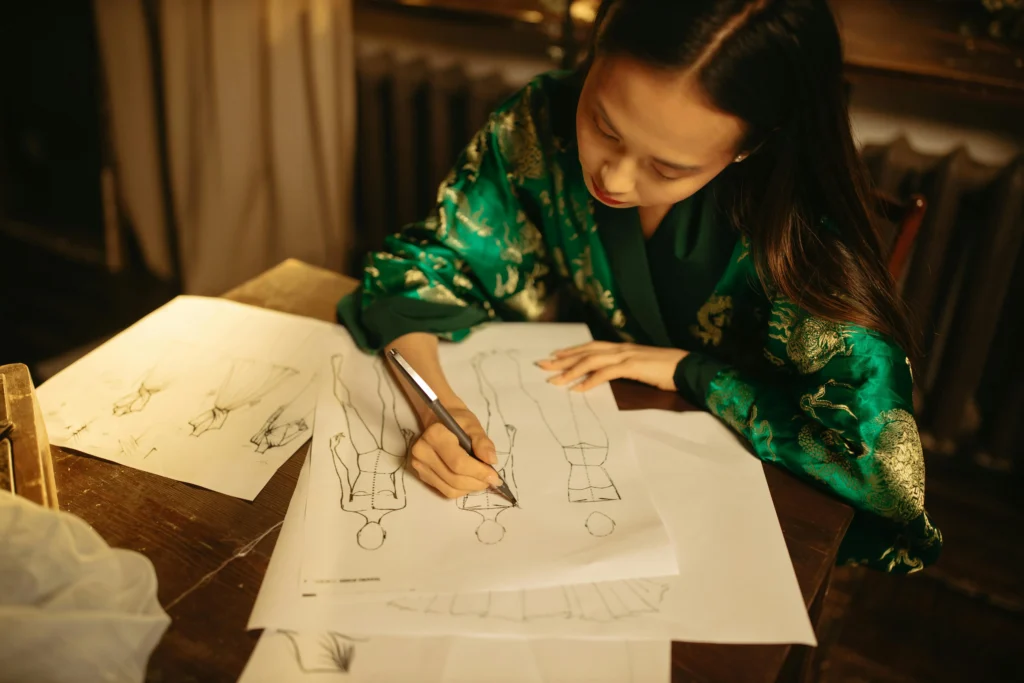
8. Online Sustainable Fashion Marketplace
What it is: A platform connecting multiple eco-brands and secondhand sellers.
Why it works: Shoppers want one place to browse eco-options.
Steps to start:
- Create a website with seller accounts.
- Curate trusted brands/products.
- Charge commissions on each sale.
Challenges: Competing with giants like Etsy. Differentiate with sustainability-only focus.
Startup cost: $5,000–$20,000 (website + marketing).
Monetization: Commission, listing fees, advertising.
Example: DoneGood highlights vetted ethical brands in one marketplace.
9. Clothing Rental Service
What it is: Renting out clothes for special occasions, work, or daily wear.
Why it works: Customers save money and reduce waste by renting instead of buying.
Steps to start:
- Build an inventory (formal wear, maternity wear, etc.).
- Set up an online booking system.
- Offer delivery and return options.
Challenges: Inventory wear-and-tear. Mitigate with deposits and repair options.
Startup cost: $10,000–$30,000.
Monetization: Rental fees, memberships, late-return charges.
Example: Rent the Runway scaled this model globally.
10. Fashion Repair and Alterations Service
What it is: Offering tailoring, mending, and upcycling services.
Why it works: Extends the life of clothing, reduces waste, and saves money for consumers.
Steps to start:
- Learn or hire tailoring skills.
- Open a small shop or operate from home.
- Offer pickup and delivery for convenience.
Challenges: Customers may undervalue repairs. Solve this with strong messaging on sustainability.
Startup cost: $500–$2,000.
Monetization: Service fees, subscription plans (e.g., monthly repair packages).
Example: Many small repair studios thrive in urban eco-conscious communities.
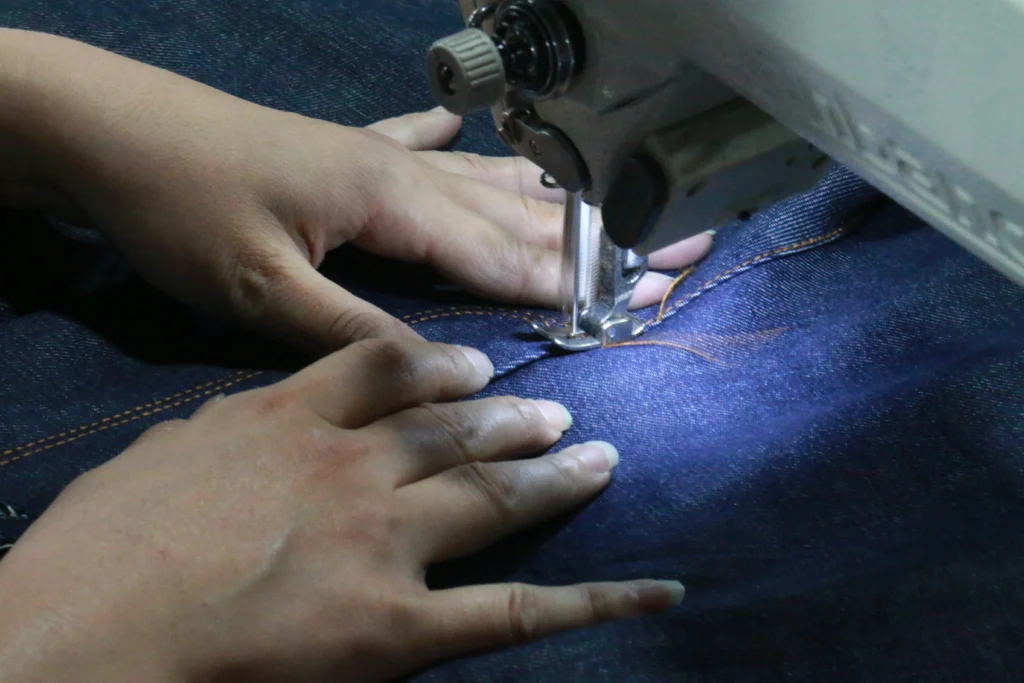
11. Kids’ Sustainable Clothing Brand
What it is: Eco-friendly, durable clothing for children.
Why it works: Parents are increasingly eco-conscious and willing to invest in safer clothing.
Steps to start:
- Focus on organic fabrics or recycled materials.
- Design durable, size-adjustable clothes.
- Sell through online stores or pop-up events.
Challenges: Kids outgrow clothes quickly. Create resale or trade-in options.
Startup cost: $5,000–$15,000.
Monetization: Product sales, trade-in credits, bundles.
Example: Mini Rodini makes organic kidswear with resale programs.
12. Maternity and Nursing Wear (Eco-Friendly)
What it is: Sustainable clothing for pregnant and nursing mothers.
Why it works: Growing market with limited eco-options.
Steps to start:
- Use stretch-friendly, organic fabrics.
- Offer multifunctional designs (e.g., maternity-to-nursing dresses).
- Sell online with targeted social media ads.
Challenges: Short-term use. Encourage rental or resale models.
Startup cost: $5,000–$12,000.
Monetization: Product sales, rental models, subscription boxes.
13. Custom Made-to-Order Fashion
What it is: Producing clothing only after it’s ordered, reducing inventory waste.
Why it works: Customers love personalization, and businesses save on unsold stock.
Steps to start:
- Offer basic templates customers can customize.
- Use digital tools for orders and size selection.
- Partner with local tailors or small workshops.
Challenges: Longer delivery times. Solve with transparent communication.
Startup cost: $2,000–$8,000.
Monetization: Premium pricing, customization fees.
Example: Companies like Son of a Tailor succeed with made-to-order basics.
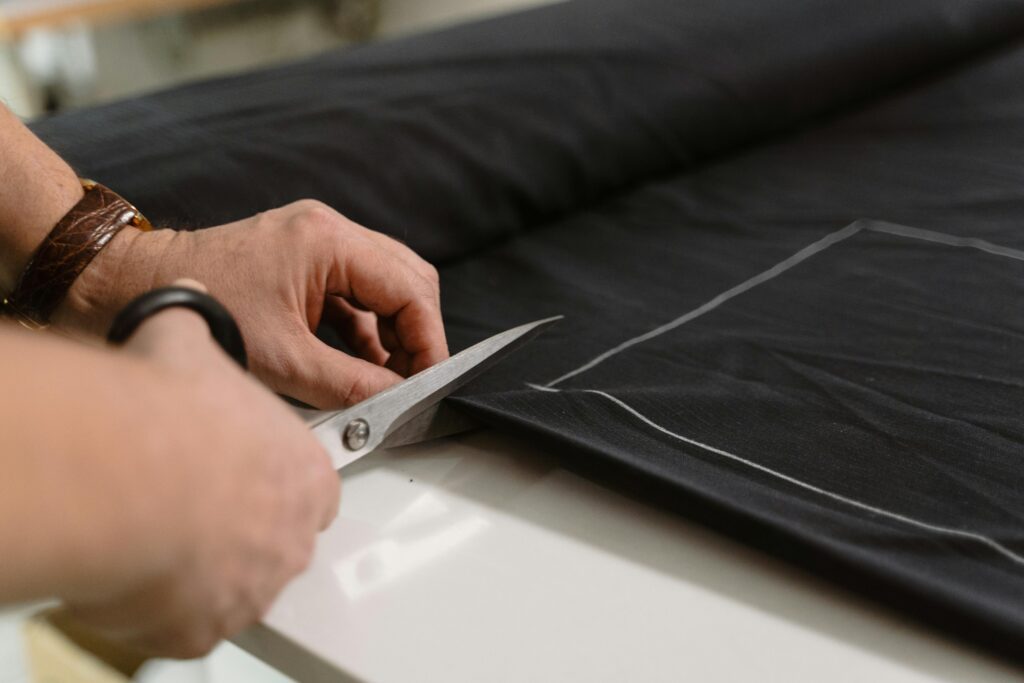
14. Ethical Activewear Brand
What it is: Workout gear made from recycled or eco-materials.
Why it works: Activewear is growing fast, and people want sustainable choices.
Steps to start:
- Source eco-friendly performance fabrics.
- Design for function and comfort.
- Market through fitness influencers.
Challenges: Competing with big brands. Focus on storytelling and transparency.
Startup cost: $10,000–$25,000.
Monetization: Direct sales, wholesale, influencer partnerships.
Example: Girlfriend Collective uses recycled plastics for activewear.
15. Local Artisan Collaboration Shop
What it is: A boutique showcasing handmade, sustainable clothing from local artisans.
Why it works: Supports local economies and appeals to ethical shoppers.
Steps to start:
- Partner with artisans and co-ops.
- Set up a physical or online boutique.
- Share artisan stories to connect with buyers.
Challenges: Managing inventory from multiple artisans. Use consignment agreements.
Startup cost: $3,000–$15,000.
Monetization: Direct sales, event pop-ups, workshops.
16. Sustainable Bridal Wear Business
What it is: Eco-friendly wedding dresses and suits.
Why it works: Weddings are special, and couples are seeking ethical choices.
Steps to start:
- Use organic or recycled fabrics.
- Offer dress rental or resale programs.
- Market via wedding blogs and Pinterest.
Challenges: Niche market. Offer related services like accessories or alterations.
Startup cost: $5,000–$20,000.
Monetization: Sales, rentals, accessories upsell.
Example: Brands like Reformation offer eco bridal lines.
17. Eco-Friendly Fashion Subscription Box
What it is: Curated boxes of sustainable clothing or accessories delivered monthly.
Why it works: Subscription models generate recurring revenue.
Steps to start:
- Partner with eco-brands for wholesale deals.
- Offer themed boxes (e.g., casual wear, jewelry).
- Build loyalty with customization options.
Challenges: Customer retention. Solve with surprise items and rewards.
Startup cost: $2,000–$6,000.
Monetization: Subscription fees, affiliate brand partnerships.
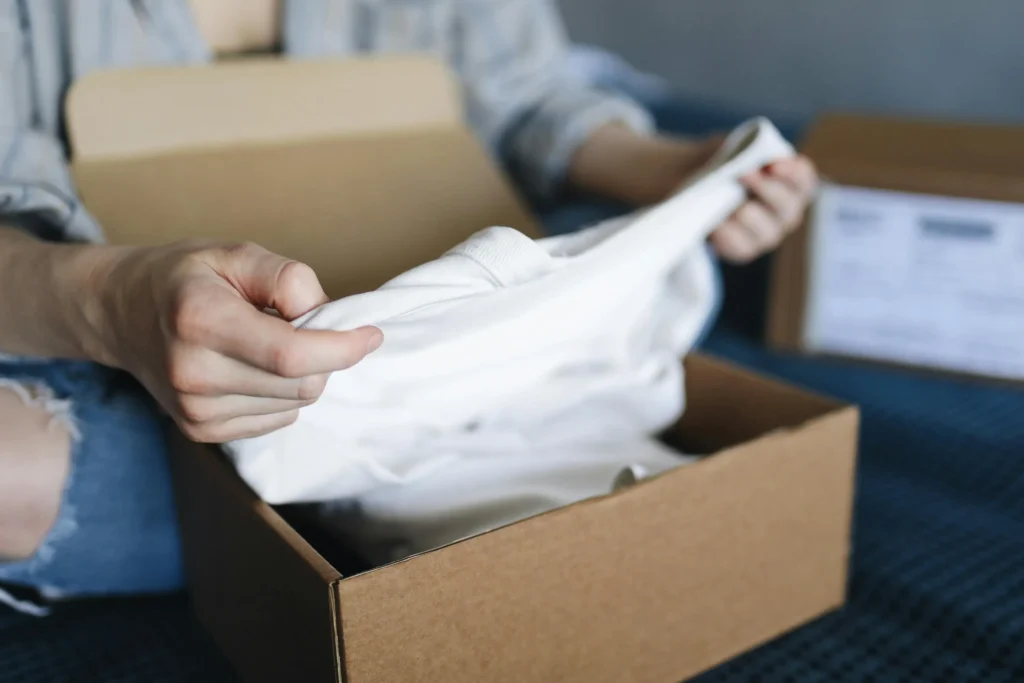
18. Vintage Reselling Business
What it is: Curating and selling vintage clothing.
Why it works: Vintage is timeless, and it’s inherently sustainable.
Steps to start:
- Source from thrift stores, estate sales, or auctions.
- Focus on eras or styles (90s, Y2K, luxury vintage).
- Sell on Depop, Etsy, or in-store.
Challenges: Authenticity and sizing. Offer detailed photos and measurements.
Startup cost: $500–$5,000.
Monetization: Direct sales, styling services.
Example: Many Depop sellers build full-time income from vintage reselling.
19. Digital Fashion/Virtual Clothing Line
What it is: Clothing designed for virtual worlds or social media content.
Why it works: People are paying for digital-only clothing for gaming or online presence.
Steps to start:
- Learn 3D design tools (CLO3D, Blender).
- Sell via NFT marketplaces or direct downloads.
- Partner with influencers to showcase digital clothing.
Challenges: Still a niche market. Start by targeting gamers and content creators.
Startup cost: $500–$2,000 (software + design).
Monetization: Direct sales, collaborations, licensing.
Example: The Fabricant sells purely digital fashion items.
20. Sustainable Fashion Blogging & Influencing
What it is: Creating content on eco-fashion trends and products.
Why it works: Content drives awareness and affiliate income.
Steps to start:
- Start a blog, YouTube channel, or Instagram.
- Share styling tips, product reviews, and sustainability guides.
- Monetize through affiliate links, sponsorships, and ads.
Challenges: Slow to grow. Consistency and authenticity build trust.
Startup cost: $200–$1,000.
Monetization: Ads, affiliate programs, sponsored posts.
21. Educational Courses on Sustainable Fashion
What it is: Teaching others about eco-friendly fashion practices.
Why it works: Many want to learn sewing, upcycling, or sustainability basics.
Steps to start:
- Create an online course (Udemy, Teachable).
- Offer beginner-friendly content.
- Promote through blogs or social media.
Challenges: Standing out. Niche down to one skill (e.g., upcycling jeans).
Startup cost: $500–$2,500.
Monetization: Course sales, memberships, workshops.
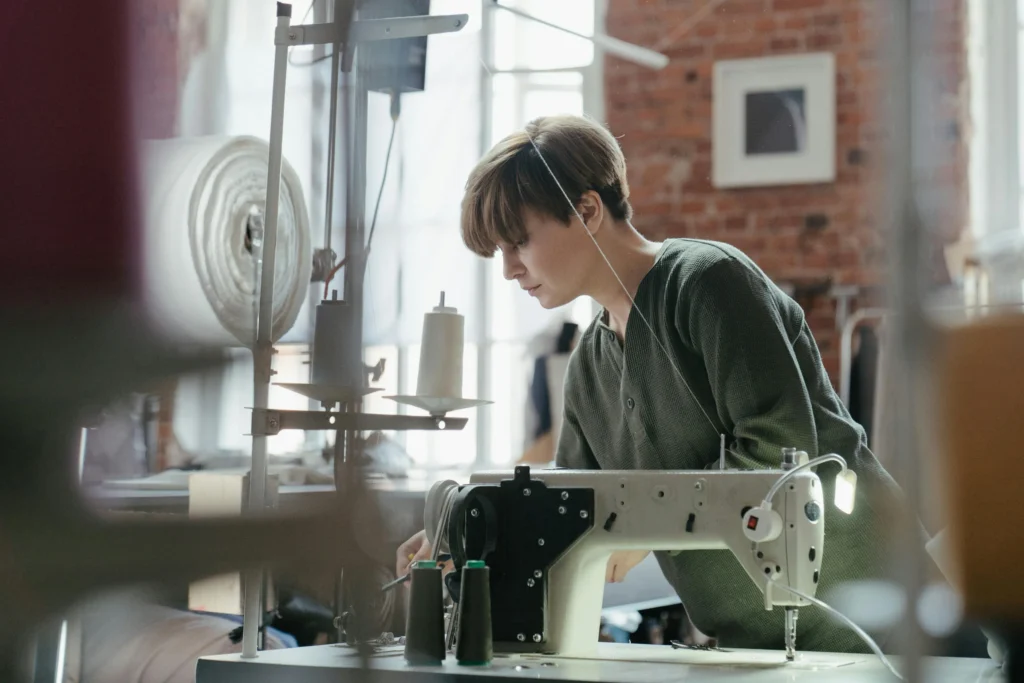
22. B2B Services (Eco-Packaging, Textile Supply)
What it is: Providing sustainable materials or packaging to fashion brands.
Why it works: Many small brands need eco-suppliers.
Steps to start:
- Research biodegradable packaging or organic textiles.
- Set up supply chain partnerships.
- Market to new and growing fashion businesses.
Challenges: Logistics and sourcing. Start with a single product category.
Startup cost: $3,000–$10,000.
Monetization: Wholesale sales, subscription supply services.
Example: Noissue provides compostable packaging for brands worldwide.
We’ve just explored more than 20 sustainable fashion business ideas—each with its own strengths, challenges, and opportunities. From what I’ve seen, the most successful ventures usually start small, test the waters, and grow step by step. If one idea caught your attention, I encourage you to take that first humble action, whether it’s researching suppliers, sketching a design, or even selling one item online.
Remember, every journey begins with a single step. Your contribution doesn’t have to be massive at the start—it just needs to be consistent. Sustainable fashion is about progress, not perfection, and the same applies to business.
If you found this guide helpful, consider exploring other niche guides on Nichejar.com to spark even more ideas. And if you have your own thoughts or experiences, I’d love to hear them—sharing insights can help all of us grow together.
TLDR
In short: here are the top takeaways from this guide on sustainable fashion business ideas:
- Upcycled clothing: Low-cost, creative, unique products.
- Secondhand fashion store: High demand, easy online setup.
- Eco-friendly accessories: Bags, jewelry, belts made from recycled materials.
- Clothing rental service: Profitable for events, weddings, and luxury wear.
- Sustainable kids’ clothing: Growing demand among eco-conscious parents.
- Custom made-to-order fashion: Reduces waste and builds exclusivity.
- Educational courses/blogging: Low-cost, authority-building income streams.
